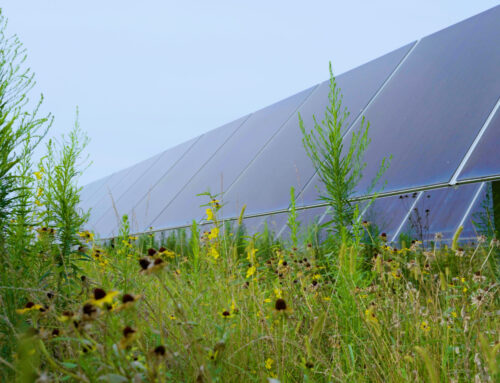Why Nations That Bet on Renewables Will Win the Next Energy Era
October 28, 2025
Fossil fuel dependence has long been a geopolitical liability. The crises over Middle East embargoes, pipeline disruptions, and Russia’s weaponization of gas supply have repeatedly exposed how brittle energy systems built on oil and gas can be. By contrast, renewable energy offers a fundamentally different strategic logic: once deployed, solar and wind farms are far less exposed to conventional geopolitical disruption. They are not immune from supply chain risks, but as electricity systems mature, renewables provide a pathway out of fossil vulnerability, and into resilience.
The fossil fuel trap
History has shown time and again how control over oil and gas can become a lever of power, or coercion. Russia’s gas cutoffs to Europe have jolted markets and exposed dependency. The OPEC oil embargoes in the 1970s reshaped global diplomacy and left economies reeling. Even today, many nations scramble to secure long-term fuel deals, maintain strategic reserves, or sustain naval dominance over shipping lanes, all because hydrocarbons must physically move, cross borders, and traverse vulnerable chokepoints.
In contrast, once your solar farms and wind parks are in place, the fuel, sunlight, wind, is local, free, and beyond blockade. The more distributed your renewable base, the less you depend on foreign suppliers to feed your grid. You reduce exposure to embargoes, pipeline sabotage, shipping disruptions, sanctions, and counterparty risk. That shift is not theoretical; it is visible in how energy security discussions are increasingly linking strategic resilience with renewables.
Renewables as strategic infrastructure
The strategic advantage of renewables lies in decentralization. A well-distributed network of solar, wind, storage, and smart grid infrastructure means that local disruptions have limited systemic effect. Rather than a small number of giant fuel producers dominating global flows, energy supply becomes more diversified across regions, stakeholders, and resources. Related: UK Sets £1.08 Billion Offshore Wind Budget In 2030 Push
The International Renewable Energy Agency (IRENA) observes that geopolitical shocks, like Russia’s war in Ukraine, have in many cases accelerated renewable deployment, because countries realize the fragility of traditional energy routes. Renewables lessen the role of money and diplomacy in securing fuel flows.
Another way to see the shift: nations that manage to build a robust renewables base gain strategic autonomy. They can rely less on imports, reduce the leverage others have over them, and direct more economic energy investment inward.
The elephant in the room: Supply chains for renewables
Of course, renewables are not a utopia. Their deployment is intimately tied to the supply chains for critical minerals, manufacturing of turbines, panels, inverters, batteries, and grid infrastructure. Much of that value chain remains concentrated in just a few countries. Disruptions in mining, processing, shipping or rare earth supply could slow deployment or introduce new dependencies.
But there is a critical difference: the risks in renewable supply chains are disruption of build-out, not disruption of operating fuel supply. If raw materials or components are delayed, you postpone new capacity. But an existing wind farm doesn’t stop generating because a mine somewhere is in turmoil. The resilience is forward-looking.
In this sense, the dependency trade shifts from fuel supply to component supply, and that is a less existential vulnerability. Moreover, unlike oil and gas infrastructure designed for extraction decades ago, renewable supply chains can be diversified, regionalized, and redesigned with security in mind. Nations can choose to localize critical parts of the value chain, stockpile key minerals, drive recycling, or invest in alternate materials to reduce concentration risk.
Strategic voices recognizing the shift
The strategic shift is being noticed in security and defense circles. In a 2024 workshop on “Clean Energy is National Security,” participants referenced how militaries increasingly see fossil fuel single-source dependency as a threat, and view distributed renewables as part of resilient energy and security planning. The former U.S. Admiral Samuel Locklear and retired generals have engaged in dialogue about the strategic necessity of clean energy for defense readiness.
Meanwhile, analysts at think tanks like Stimson argue that the paradigm of energy security must evolve: in the future, energy security will look less about securing oil flows and more about stabilizing technology supply lines, grid robustness, and clean energy redundancy. The green transition changes the chessboard, not just the pieces.
A strategic imperative, not a climate wish
The shift is not simply about emissions or climate activism. It is about power, influence, survival. Countries that remain overexposed to fossil fuel imports will be more vulnerable to coercion, price shocks, and supply disruptions. Countries that build resilient, distributed renewables and robust supply chains will gain strategic maneuverability.
This is not to underplay the complexity. Governments must safeguard and diversify supply chains for components and minerals. They must invest in recycling, alternative chemistries, and onshore manufacturing. They must anticipate geopolitical pressure over critical minerals just as they once had to negotiate over oil.
But the strategic move is clear: the future of energy warfare is unlikely to be over pipelines. It will be about cyberattacks, grid resilience, software, storage, materials, and local adaptability. And the more a country depends on fossil imports, the more vulnerable it becomes to disruptions, whether by war, diplomacy, sanctions, or sabotage.
Conclusion
Fossil fuels gave great power to those who controlled them, but they also chained many nations to them. The vulnerability was baked into the model. Renewables, by contrast, allow countries to turn the tables: to convert energy from a strategic weakness into a pillar of resilience. Yes, supply chain risks exist, but they are manageable and mitigable. What matters is who leads this shift, who secures the value chains, and who designs energy systems with strategic autonomy at their core.
The geopolitical age of oil and gas may already be waning. The age of renewables and resilience is dawning. The choice is not only moral or environmental, it is strategic. And those who ignore it do so at their peril.
By Leon Stille for Oilprice.com
More Top Reads From Oilprice.com
- Fire Erupts at Chevron Refinery in California
- India Eyes Long-Term U.S. LPG Supply
- Putin: Oil Prices Could Soar Past $100 Without Russian Crude
Search
RECENT PRESS RELEASES
Related Post




